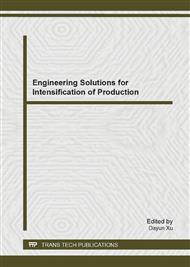p.140
p.144
p.148
p.157
p.163
p.167
p.173
p.179
p.185
Giant Magnetostrictive Freezing Rain Sensor
Abstract:
As a disastrous weather, hazards of freezing rain can not be ignored. The important thing to be solved at present is using advanced technology and material to correctly detect and improve the forecasting ability of freezing rain. Based on the damage of freezing rain and excellent properties of the giant magnetostrictive materials, this paper gives a giant magnetostrictive freezing rain sensor. When there is different thickness of freezing rain, natural frequency of the sensor will change. Resonance is regained by adjusting the frequency of the power. From natural frequency change, the thickness of the freezing rain can be known. Using COMSOL software, modal analysis of different thickness freezing rain for the giant magnetostrictive freezing rain sensor is studied. The results show that there is big difference in natural frequency with difference thickness of freezing rain, which is easy to achieve automatic frequency tracking and monitor.
Info:
Periodical:
Pages:
163-166
Citation:
Online since:
February 2014
Authors:
Price:
Сopyright:
© 2014 Trans Tech Publications Ltd. All Rights Reserved
Share:
Citation:


